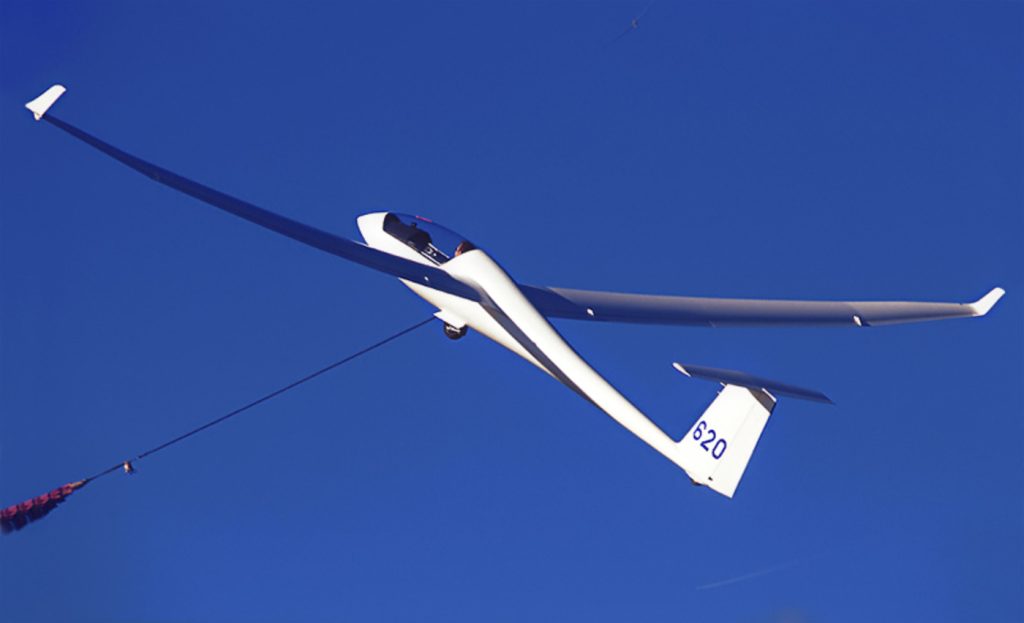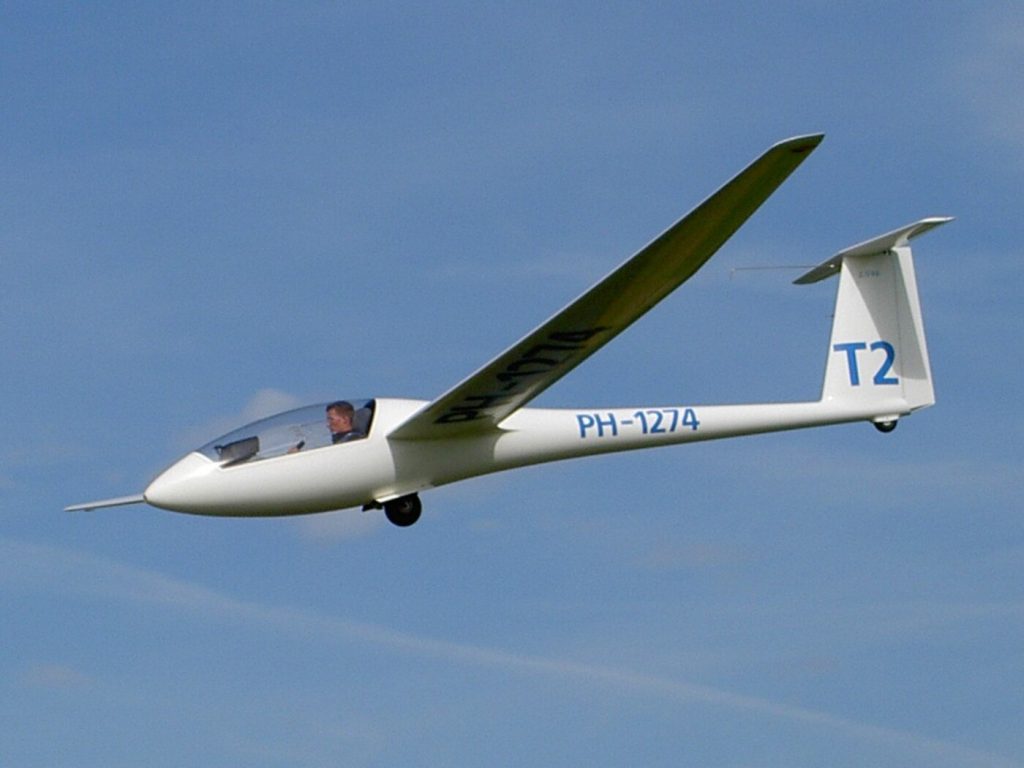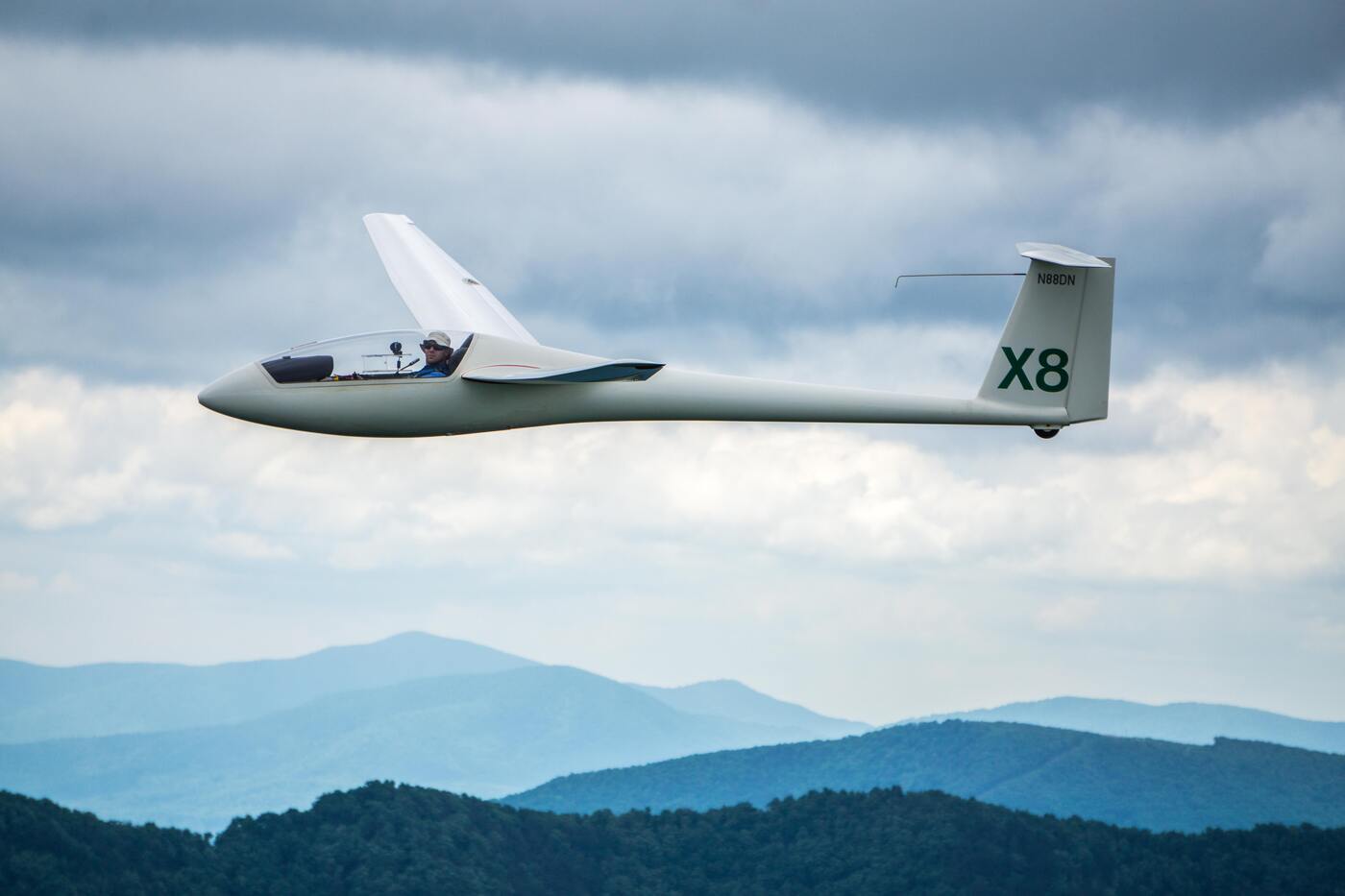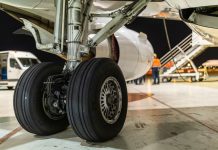If you love flying, you’ll know that you don’t always need an engine to fly.
Just like boats, planes can also fly using sail power. And that’s exactly how gliders fly.
Gliders are heavier-than-air aircraft, also called aerodynes, with a highly tapered fuselage and extremely long wings for maximum aerodynamic efficiency.

By using the rising hot air currents, gliders can remain at altitude without the need for engines. Some gliders, called motor gliders, also use a means of propulsion to extend their flight, like a kind of hybrid between a glider and an airplane.
Gliding, also known as soaring, is a recreational activity and competitive air sport, but to pilot a glider you need to obtain an SPL licence (Soaring Pilot Licence).
How do gliders take off and land?
Gliders are launched by means of aerotowing. A towing cable is attached to the glider and then it is towed by an aeroplane to the required altitude before being released. A similar technique involves a ground-based winch that pulls in a steel cable that can stretch up to 1.5 km into the air.
Another system that is more rarely used these days is the “bungee launch”, which involves launching the glider from the ground using an extremely strong elastic bungee cord. Gliders can also be launched from a slope, a technique which is used in paragliding.

Landing, on the other hand, is entirely dependent on the pilot’s skills. The pilot calculates the ratio between the altitude and the distance to the runway with utmost precision, taking into account meteorological conditions. Thanks to the glider’s lift-to-drag ratio, it is possible to glide down on the air currents as they cool, safely bringing the glider to its destination.
If you’re also a fan of history as well as the fascinating laws of aerodynamics, check out our article on Inventors of flying machines and read about the extraordinary achievement of George Cayley, the inventor of the glider. He became the first person in history to fly, frightening his coachman half to death in the process…




